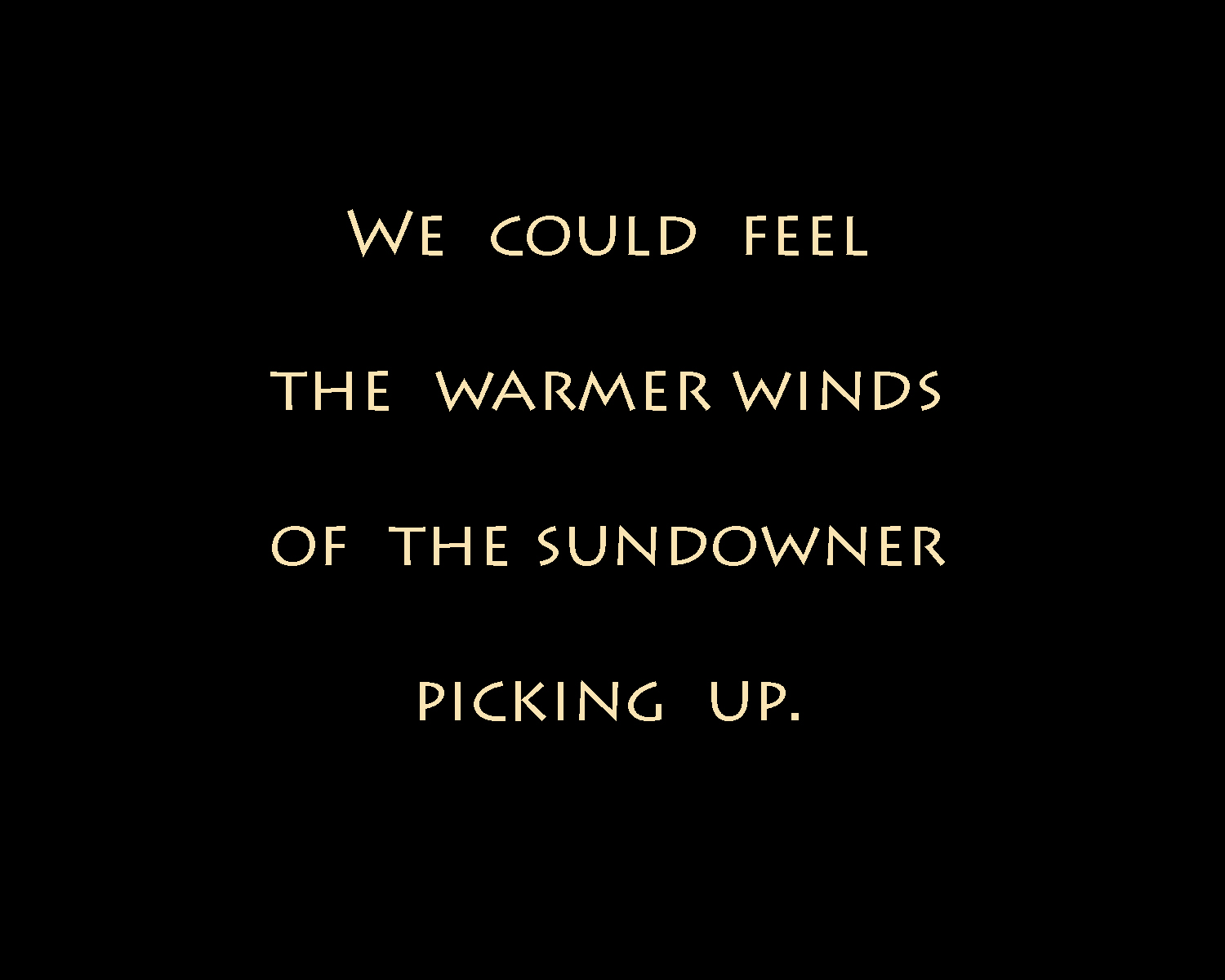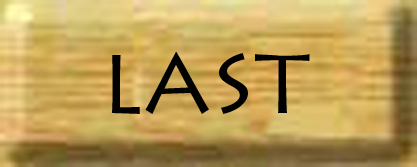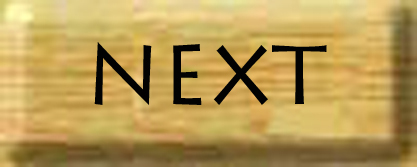
Sundowners
On most of my adventures nobody gets shot.
In 1986, Johnny and had left the Big Island, moved to Santa Barbara, California; slipped into a sweet spot in the world of Powell-Peralta and skateboarding, and I bailed when the situation began to close out in 1991. JW was grown, graduated High School, and had his own apartment near the Santa Barbara City College. The skateboard company was shrinking in an industry-wide slump. No longer a single parent, I was untethered and ready to move on to the San Francisco Bay Area, where friends from our 70's commune days had re-converged, where our parenting all began.
So I took the leap, I was 47 at the time. I had a 4-wheel drive Jeep pickup with an installed mobile phone (before cell phones), a toolbox across the back, a basic set of carpenter's tools, and an active California Contractor's License. Stashed in a storage locker in Santa Barbara, among my household stuff and mementos, was a "486" Windows PC, hottest personal computer available at the time. I had made the exorbitant purchase so that I would have the ability do computer-assisted drafting. It had a digitizing pad that went with it and a pen plotter that I used to produce drawings.
I took my time exploring the parts of Northern California I was drawn to. I went on an excursion zigzagging through redwood country, marveling at the ancient towering trees, being nauseated when I came across a clear cut mountainside on a freshly scraped logging road, visiting redwood nurseries, buying seedlings to do some anonymous plantings, and some I took back to friends in the Bay Area.
I didn't know anyone in the local construction world, having been gone 12 years, but I did know that the Oakland and Berkeley hills would provide a continuous supply of remodeling jobs. The climate and topography of the west-facing slopes are ideal. The cold fog that flows through the Golden Gate and over the low hills of San Francisco still has to flow ten miles to reach the shores of the East Bay, and then it has to cross miles of urban flatlands, before it starts to creep up into those hills. The views from these warm hillside homes above the town are a spectacular panorama of ships and sailboats on the shining waters, the Bay Bridge to Treasure Island, the San Francisco skyline, the Golden Gate Bridge, Alcatraz Island, Angel Island, Mount Tamalpais in Marin County. How could you move on from a house where you had grown accustomed to watching the sun set over that scene night after night? If you prospered, changing location would not do. I you wanted to live larger, your only choice was to remodel, since the location was unbeatable. Back in the late 1970's, I had been part of 5 or 6 remodels and built over 50 redwood hot tubs, many with decks and other outdoor features also made of redwood.
The factors that make those west-facing hillsides so pleasant can at certain times deliver a disastrous combination. In most of California, temperatures inland are much hotter than on the coast. On a hot summer afternoon in the East Bay, the warm air rises up the slopes and reaches the ridgeline. There it meets the edge of the inland hot air mass, which has been expanding all through the hot afternoon and stalled by the breezes coming up the coastal slopes.
Then the sun goes down. And the warm air that has been rising all day cools and begins to flow back downhill, and the dam of rising air that has been restraining the overheated inland air mass fails. Exactly like a bursting dam, the hot air floods down over a pass, a low spot in the hills and a hot fierce wind races down the slopes. In California, this is called a "sundowner".
The Coastal range behind Santa Barbara, nearly 400 miles south, the Santa Ynez Mountains, at 3000 to 4000 feet in most places, dip to 2200 feet at San Marcos Pass. This makes an exaggerated potential for sundowners. In late June, Santa Barbara had been experiencing hot, sunny days. Wednesday, June 27, 1990, I still worked at the Powell factory. Temperatures were around 100 degrees downtown. At about 6:00, a fire was started by a property owner who was feuding with his neighbor, near the top of the pass. In the summer, the dry chaparral is at its peak of combustibility. Local fire departments scrambled to the battle knowing what could happen. The fire had quickly scorched several hundred acres in the unpopulated areas of the Los Padres National Forest, and was moving toward the isolated communities of Painted Cave and the Trout Club. Then the sun started to go down. Over the mountain, the Santa Ynez Valley had been having one of its sizzling 110-degree days. As the coastal air cooled and contracted, over the pass came a strong hot wind to turn that blaze into a firestorm.
The Powell-Peralta skateboard company had a 120,000 square foot manufacturing plant near the Santa Barbara Airport, and I was the facility manager. A small fire had started at a municipal dump northeast of us, and our crew had rolled out hoses; we knew what could happen as well. Our factory had been a lemon processing plant 50 years before. The wood structured roof looked like about 4 end to end pairs of airplane hangars butted together side by side, with two larger hangars at 90 degrees to the others at the end. The arched roofs of each bay came down to the next in valleys. The weatherproof surface is called a torch-down composition roof, meaning it is mostly made of tar. A fire would find plenty of fuel.
So we were out on the roof with hoses keeping an eye on things at the dump fire, when we saw the first smoke of the "Painted Cave Fire" at the top of San Marcos Pass, less than four miles away, almost directly north of us. We could feel the warmer winds of the sundowner picking up, and we knew it was going to be very bad.
And it was. It's 5 miles from the top of the pass to the Pacific Ocean. We watched in horror as this voracious horizontal maelstrom gobbled up that territory in less than 3 hours, leaping the expanse of six-lane Highway 101 and its two frontage roads, consuming in its path 440 homes, and killing one woman who could not outrun the devastation in Trout Club area. The route taken by the wind-driven fire was through largely undeveloped hillside chaparral. The fact that it was "only" 440 houses in the unfortunate neighborhoods torched was made clear by a similar event a little more than a year later.
A year later in October of 1991, up in Northern California, all the precursors of the sundowner effect were in place. High in those East Bay hills, Highway 24 leads from Berkeley runs through the Caldecott Tunnel to towns further east. Late in the afternoon, some construction workers disposing of some tarpaper debris by burning it, had lost control as the hot wind picked up and the firestorm was ignited.
This time, in the path of the blowtorch was the densely populated neighborhoods of the Oakland Hills. The streets had evolved organically over time and were twisted and narrow, a nightmare for fire trucks racing up to the fire lines while residents fled for their lives in the opposite direction. This time while the winds were not as strong as in Santa Barbara, but the devastation was much worse. 25 people died, and 3440 homes were totally consumed. It left a huge scar on the Berkeley-Oakland Hills of ashes, twisted metal, scorched sidewalks and chimneys, where once there were homes, trees, neighborhoods, people with a collective memory, all gone forever in one horrible night.
Spring 1992, I left Powell.





Copyright © 2022 John Oliver
All Rights Reserved
mail@unclejohnsweb.com

In 1986, Johnny and had left the Big Island, moved to Santa Barbara, California; slipped into a sweet spot in the world of Powell-Peralta and skateboarding, and I bailed when the situation began to close out in 1991. JW was grown, graduated High School, and had his own apartment near the Santa Barbara City College. The skateboard company was shrinking in an industry-wide slump. No longer a single parent, I was untethered and ready to move on to the San Francisco Bay Area, where friends from our 70's commune days had re-converged, where our parenting all began.
So I took the leap, I was 47 at the time. I had a 4-wheel drive Jeep pickup with an installed mobile phone (before cell phones), a toolbox across the back, a basic set of carpenter's tools, and an active California Contractor's License. Stashed in a storage locker in Santa Barbara, among my household stuff and mementos, was a "486" Windows PC, hottest personal computer available at the time. I had made the exorbitant purchase so that I would have the ability do computer-assisted drafting. It had a digitizing pad that went with it and a pen plotter that I used to produce drawings.
I took my time exploring the parts of Northern California I was drawn to. I went on an excursion zigzagging through redwood country, marveling at the ancient towering trees, being nauseated when I came across a clear cut mountainside on a freshly scraped logging road, visiting redwood nurseries, buying seedlings to do some anonymous plantings, and some I took back to friends in the Bay Area.
I didn't know anyone in the local construction world, having been gone 12 years, but I did know that the Oakland and Berkeley hills would provide a continuous supply of remodeling jobs. The climate and topography of the west-facing slopes are ideal. The cold fog that flows through the Golden Gate and over the low hills of San Francisco still has to flow ten miles to reach the shores of the East Bay, and then it has to cross miles of urban flatlands, before it starts to creep up into those hills. The views from these warm hillside homes above the town are a spectacular panorama of ships and sailboats on the shining waters, the Bay Bridge to Treasure Island, the San Francisco skyline, the Golden Gate Bridge, Alcatraz Island, Angel Island, Mount Tamalpais in Marin County. How could you move on from a house where you had grown accustomed to watching the sun set over that scene night after night? If you prospered, changing location would not do. I you wanted to live larger, your only choice was to remodel, since the location was unbeatable. Back in the late 1970's, I had been part of 5 or 6 remodels and built over 50 redwood hot tubs, many with decks and other outdoor features also made of redwood.
The factors that make those west-facing hillsides so pleasant can at certain times deliver a disastrous combination. In most of California, temperatures inland are much hotter than on the coast. On a hot summer afternoon in the East Bay, the warm air rises up the slopes and reaches the ridgeline. There it meets the edge of the inland hot air mass, which has been expanding all through the hot afternoon and stalled by the breezes coming up the coastal slopes.
Then the sun goes down. And the warm air that has been rising all day cools and begins to flow back downhill, and the dam of rising air that has been restraining the overheated inland air mass fails. Exactly like a bursting dam, the hot air floods down over a pass, a low spot in the hills and a hot fierce wind races down the slopes. In California, this is called a "sundowner".
The Coastal range behind Santa Barbara, nearly 400 miles south, the Santa Ynez Mountains, at 3000 to 4000 feet in most places, dip to 2200 feet at San Marcos Pass. This makes an exaggerated potential for sundowners. In late June, Santa Barbara had been experiencing hot, sunny days. Wednesday, June 27, 1990, I still worked at the Powell factory. Temperatures were around 100 degrees downtown. At about 6:00, a fire was started by a property owner who was feuding with his neighbor, near the top of the pass. In the summer, the dry chaparral is at its peak of combustibility. Local fire departments scrambled to the battle knowing what could happen. The fire had quickly scorched several hundred acres in the unpopulated areas of the Los Padres National Forest, and was moving toward the isolated communities of Painted Cave and the Trout Club. Then the sun started to go down. Over the mountain, the Santa Ynez Valley had been having one of its sizzling 110-degree days. As the coastal air cooled and contracted, over the pass came a strong hot wind to turn that blaze into a firestorm.
The Powell-Peralta skateboard company had a 120,000 square foot manufacturing plant near the Santa Barbara Airport, and I was the facility manager. A small fire had started at a municipal dump northeast of us, and our crew had rolled out hoses; we knew what could happen as well. Our factory had been a lemon processing plant 50 years before. The wood structured roof looked like about 4 end to end pairs of airplane hangars butted together side by side, with two larger hangars at 90 degrees to the others at the end. The arched roofs of each bay came down to the next in valleys. The weatherproof surface is called a torch-down composition roof, meaning it is mostly made of tar. A fire would find plenty of fuel.
So we were out on the roof with hoses keeping an eye on things at the dump fire, when we saw the first smoke of the "Painted Cave Fire" at the top of San Marcos Pass, less than four miles away, almost directly north of us. We could feel the warmer winds of the sundowner picking up, and we knew it was going to be very bad.
And it was. It's 5 miles from the top of the pass to the Pacific Ocean. We watched in horror as this voracious horizontal maelstrom gobbled up that territory in less than 3 hours, leaping the expanse of six-lane Highway 101 and its two frontage roads, consuming in its path 440 homes, and killing one woman who could not outrun the devastation in Trout Club area. The route taken by the wind-driven fire was through largely undeveloped hillside chaparral. The fact that it was "only" 440 houses in the unfortunate neighborhoods torched was made clear by a similar event a little more than a year later.
A year later in October of 1991, up in Northern California, all the precursors of the sundowner effect were in place. High in those East Bay hills, Highway 24 leads from Berkeley runs through the Caldecott Tunnel to towns further east. Late in the afternoon, some construction workers disposing of some tarpaper debris by burning it, had lost control as the hot wind picked up and the firestorm was ignited.
This time, in the path of the blowtorch was the densely populated neighborhoods of the Oakland Hills. The streets had evolved organically over time and were twisted and narrow, a nightmare for fire trucks racing up to the fire lines while residents fled for their lives in the opposite direction. This time while the winds were not as strong as in Santa Barbara, but the devastation was much worse. 25 people died, and 3440 homes were totally consumed. It left a huge scar on the Berkeley-Oakland Hills of ashes, twisted metal, scorched sidewalks and chimneys, where once there were homes, trees, neighborhoods, people with a collective memory, all gone forever in one horrible night.
Spring 1992, I left Powell.
